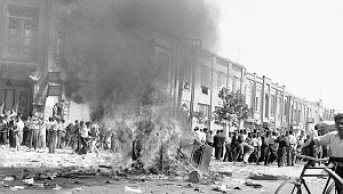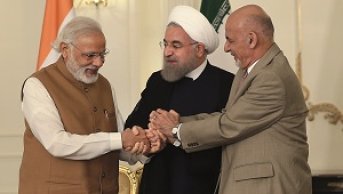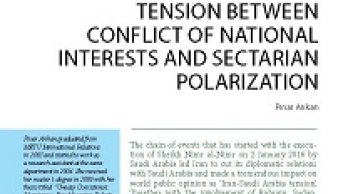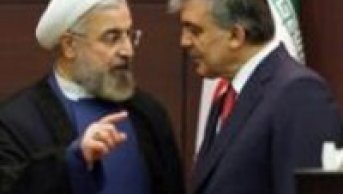Iranian Elections For Islamic Consultative Assembly (Parliament) and Assembly of Experts of the Leadership
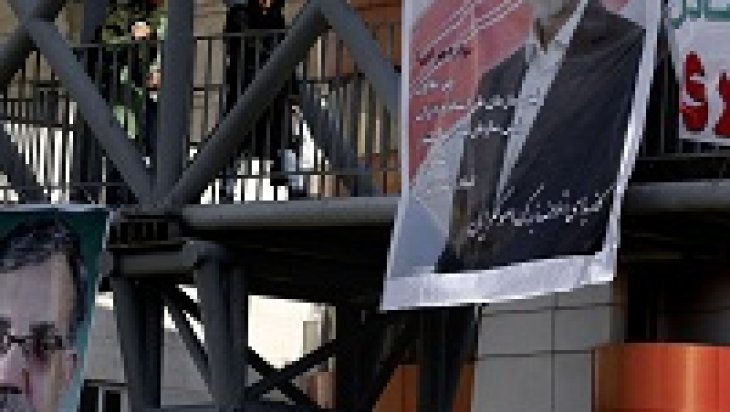
Iranian people will be electing the 10th Islamic Consultative Assembly (Parliament/Majles) and 5th Assembly of Experts of the Leadership (Majles-e Khobregan-e Rahbari) on 26 February2016. The elections of the two constitutional governmental institutions are important for the future of the Iranian state in different aspects. The composition of the new parliament will determine the fate of reforms that were promised to be delivered by the reformist president Hassan Rouhani, who is expected to stay in power for a second four-year presidential term until 2021. The composition of the Assembly of Experts and its power balances will determine the identity of possible-future Iranian Leader, given the fact that the current leader Khamenei is aged and change in authority of the Leadership is very likely by the new Assembly during its eight-year in office.
Islamic Consultative Assembly (Parliament)
Iranian Parliament is a 290-member body elected by the people through direct and secret balloting for a four year-term. It is the legislative body of the governmental system where drafts and bills were codified by a quorum of two-thirds majority. The laws enacted by the Parliament are required not to be in contradiction with the Constitution and the Islamic Law (Shari’a). To decide on the required conformity, another governmental body, the Guardians Council, is authorized. Thus, practically, the laws enacted by the Parliament cannot be valid without the approval of the Guardians Council. In addition to legislature, the Parliament also assumes the duty to approve all the international treaties, protocols, contracts and agreements, and the loans or grant-in aids. It is also stipulated in the Constitution that the country must never be without a Parliament; thus, the government must organize the elections by before the end of the previous term.
According to the Parliament Electoral Law, the Guardians Council is responsible for monitoring the elections for the Parliament. This monitoring has been defined in two forms: One is the estesvaabi (proactive) supervision, which means legally-binding interventions, and second one is the general supervision regarding all affairs during all stages of the elections.
There is no gender quota for the Parliament seats. However, certain seats are reserved for the constitutionally recognized religious minorities. Accordingly, Zoroastrians and Jews each have one seat, Assyrian and Chaldean Christians together have one seat, Southern and Northern Armenians each have one seat among the 290 members.
Assembly of Experts of the Leadership
Assembly of Experts of the Leadership is 86-member Constitutional body elected in every eight-years since 1983 with the authority to appoint, monitor, and dismiss the Iranian Supreme Leader. Although the first Assembly of Experts was convened in 1979 to draft the Constitution of the Islamic Republic after the revolution, it dissolved itself in December 1979 after the ratification of the Constitution. The first Assembly of Experts with current Constitutional duties was first formed in 1982 and assumed work in 1983. This Assembly chose Ayatollah Khamenei as the new Supreme Leader in 1989 after the death of the first Supreme Leader of Revolution, Ayatollah Khomeini.
The Assembly of Experts is composed of scholars of Islamic Law (mujtahed) who are elected by direct and secret vote of the people.The election of the leadership of the Assembly, which is for two-years and through secret balloting of the members of the Assembly, is also important for the competition among the political factions.
Election Race among the Political Factions
The official campaigning period has started on 18 February and will end one day prior to the election. There is no official party politics in Iran although there are political parties registered to the Interior Ministry. The candidates run in their own name in all the elections of the Islamic Republic. However, there are certain power blocs and organizations or groups within these blocs who declare support to candidates through the list of names they issued. When the candidates began campaigning, these power blocs and organizations declare their support to the campaigns of the candidates named in their lists.
February 2016 elections witnessed two major lists and independent candidates. The two lists belong to the two major power blocs in the political spectrum. One of these blocs is known as the Principalists(Usulgerayan), which can be referred as the conservative bloc determined to preserve the religious credentials of the Islamic Republic. The second is the Reformists (Eslahtalaban), who are pushing for change in the functioning of the system in favor of republican credentials of the Islamic Republic through fostering the power of elected governmental bodies. Although both power blocs declare themselves to be loyal to therevolution, their interpretation of the essence of revolutionary system varies.
The Principalists run in the elections race through a unified list for all the provinces, called the Great Coalition of the Principalists. Old veterans, such as the former Speaker of Parliament Gholam Ali Haddad-Adel and the former Minister of Labor and director of the Parliament Research Center Ahmad Tavakkoli are catching eyes in the coalition’s Tehran list for the Parliament. Likewise, the Head of the Guardian Council, Ayatollah Ahmad Jannati, and the Head of current Assembly of Experts, Ayatollah Mohammad Yazdi,are among the Principalist candidates for the Assembly of Experts.The Reformists are also competing in the elections by aunified list of various reformist parties and groups. The Tehran list of the reformists for Assembly of Experts led by the former President Akbar Hashemi-Rajsanjani and current President Hassan Rouhani. Mohammad Reza Aref, who served as the Minister of Technology and Vice-President under Khatami governments, is the major reformist candidate heading the Tehran list for Parliamentary election.
Election Implications
The result of the two elections on 26 February will mainly have domestic implications. For the Parliamentary elections, the formation of a Parliament where the majority belongs to the reformists will enable the reformist government of Hassan Rouhani to implement his promises of reform although there will still likely to be a conservative backlash from the conservative Council of Guardians to approve the laws. Moreover, less summoning of the ministers by the reformist-majority parliament will bring forth a more effectively-functioning legislature.
The Assembly of Experts elections might have a crucial role for the determination of the future Leader of the Islamic Republic. Since a change in leadership is expected due to current leader Khamenei’s old age, the newly-elected Assembly of Experts will be working on the options for a change. The composition of the new Assembly of Experts will be important for evaluation of possible future Iranian Leader if a change will be the case in Leadership. Since the Leader has constitutionally been vested by the duty of defining all general policy issues, the change in Leadership will have very vital implications for the future of the Islamic Republic.
However, both elections will not change the main frame of the foreign and security policy; hence, it will not affect regional or international issues where Iran has been involved.

